
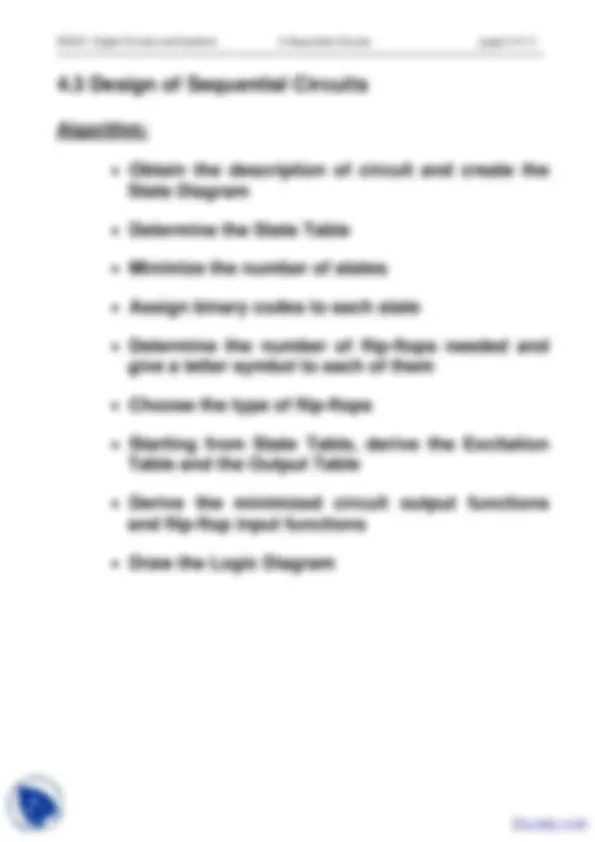
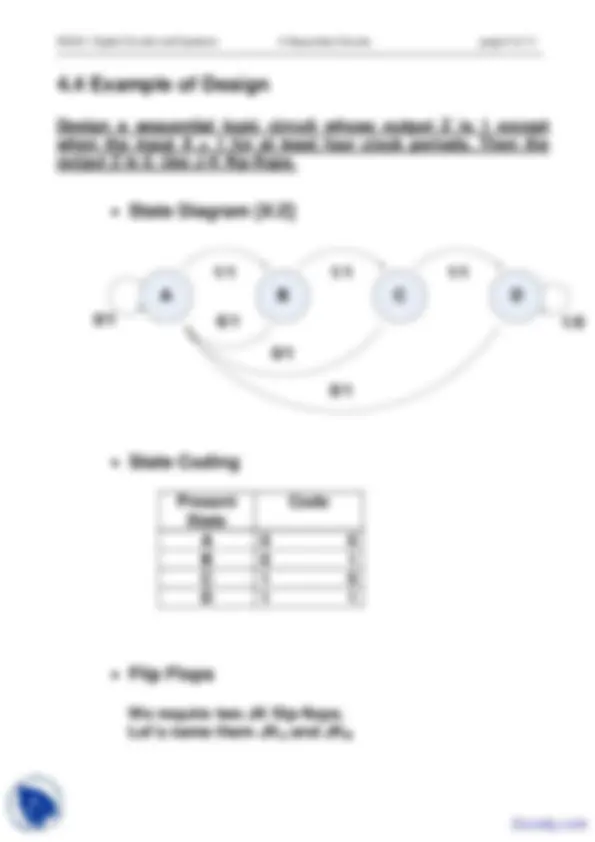
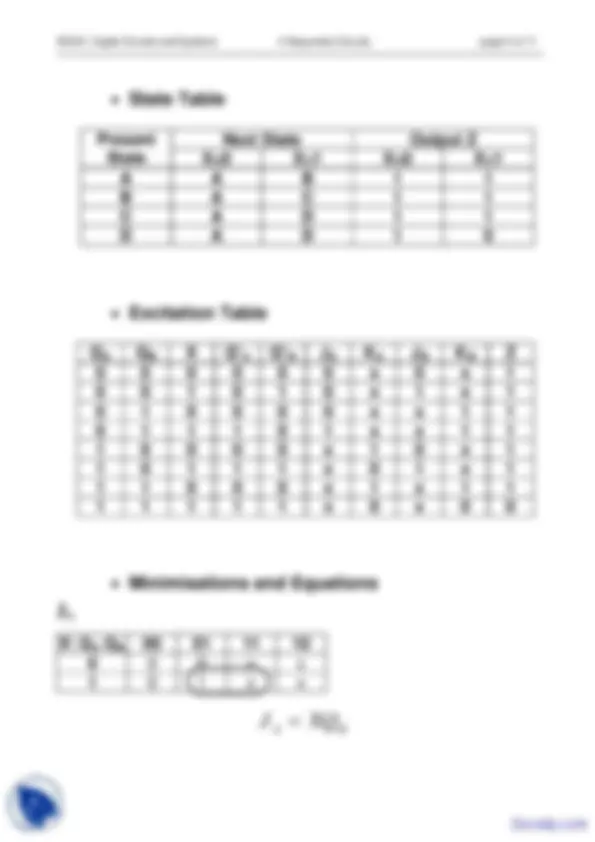
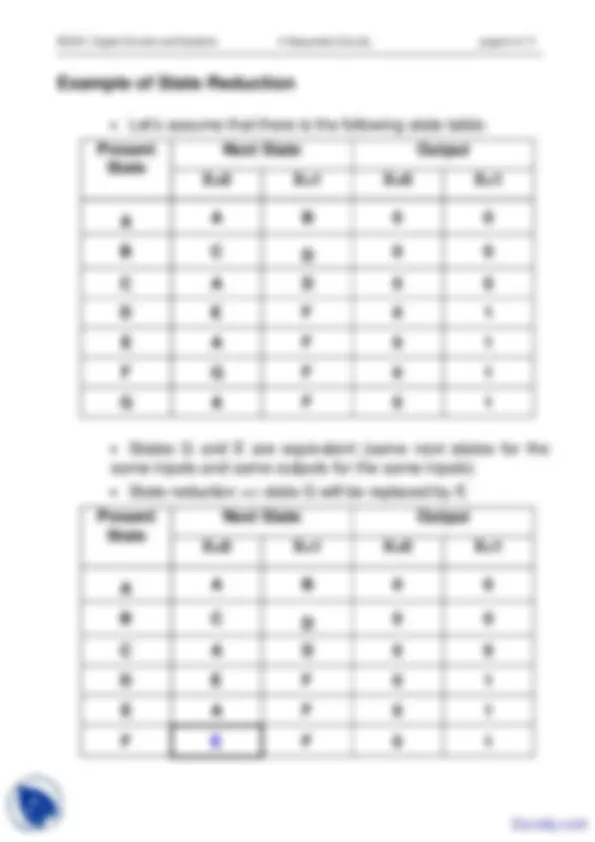
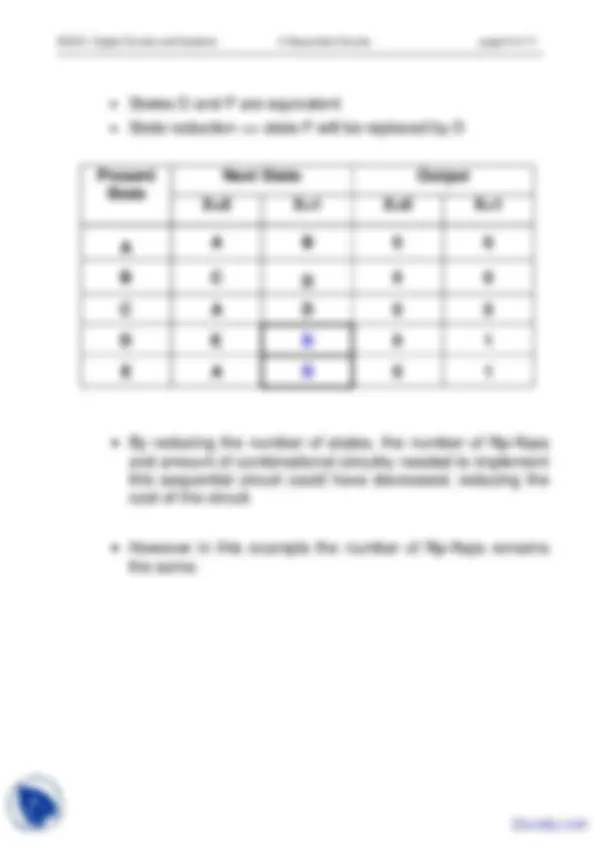
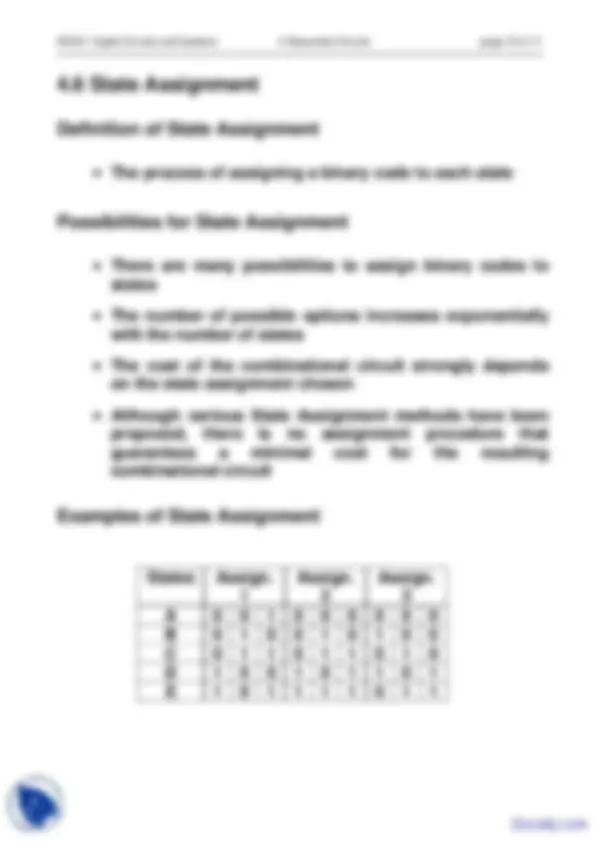


Study with the several resources on Docsity

Earn points by helping other students or get them with a premium plan


Prepare for your exams
Study with the several resources on Docsity

Earn points to download
Earn points by helping other students or get them with a premium plan
Community
Ask the community for help and clear up your study doubts
Discover the best universities in your country according to Docsity users
Free resources
Download our free guides on studying techniques, anxiety management strategies, and thesis advice from Docsity tutors
These are the Lecture Notes of Digital Circuits and Systems which includes Present State, Principle, Memory Elements, Elementscombinational Logic, Description, Circuit and Create, Number of States, Binary Codes, Letter Symbol etc. Key important points are: Arithmetic Logic Unit, Present State, Principle, Memory Elements, Elementscombinational Logic, Description, Circuit and Create, Number of States, Binary Codes, Letter Symbol
Typology: Study notes
1 / 11

This page cannot be seen from the preview
Don't miss anything!







Present State
Input Signals
Clock
SET
CLR
J
K
SET
CLR
SET
CLR
D
SET
CLR
DT
Design a sequential logic circuit whose output Z is 1 except when the input X = 1 for at least four clock periods. Then the output Z is 0. Use J-K flip-flops.
Present State
Code
We require two JK flip-flops. Let’s name them JKA and JKB
Present State
Next State Output Z X=0 X=1 X=0 X= A A B 1 1 B A C 1 1 C A D 1 1 D A D 1 0
0 0 0 0 0 0 x 0 x 1 0 0 1 0 1 0 x 1 x 1 0 1 0 0 0 0 x x 1 1 0 1 1 1 0 1 x x 1 1 1 0 0 0 0 x 1 0 x 1 1 0 1 1 1 x 0 1 x 1 1 1 0 0 0 x 1 x 1 1 1 1 1 1 1 x 0 x 0 0
0 0 0 x x 1 0 1 x x
J (^) A = XQ B
Next State Output
X=0 X=1 X=0 X=
Next State Output
X=0 X=1 X=0 X=
States Assign. 1
Assign. 2
Assign. 3 A 0 0 1 0 0 0 0 0 0 B 0 1 0 0 1 0 1 0 0 C 0 1 1 0 1 1 0 1 0 D 1 0 0 1 0 1 1 0 1 E 1 0 1 1 1 1 0 1 1
Present State
Next State Output
X=0 X=1 X=0 X=